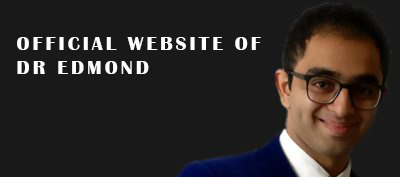Some life-saving medicines have been the achievement of our age, people live longer and die differently. Modern medicine has revolutionized in leaps and bounds the way of modern day life. However low and middle-income countries have prescription antibiotic misuse, rampant over the counter supply of Schedule H Drugs and other medicines and many look at antibiotics as a take- when-leave-when option. Countries like the US have ended up in prescription hyper-regulation which is also an extreme outlook. Going by the O’Neil report, the drug resistance problem by 2050 will have daunting consequences leading to increased mortality and negative economics on many fronts.
The milestone of a new drug by itself consumes years of research and development that big pharma engage in which goes through phases of clinical trial. Modern medicine has after all these centuries of human existence not yet found a permanent cure to common cold or notable allergens, let alone diseases which require long-term treatment.
The overuse of antibiotics threatens their promotion and desired utility. I recall not very long ago, when a team of rural practitioners confessed to me that unless you prescribe antibiotics, most village folks are not satisfied and many want immediate result. The instant gratification that would be obtained serves as an encouragement to burden the innocent patient with antibiotics. It is a different issue altogether that the patient may not even take the medicines for the entire duration triggering further resistance concerns.
Antibiotics target cellular processes in the human body, fighting bacteria and causing cell death to ensure cure. However, if the bacteria get exposed to half-baked dose concentration, they can mutate causing resistance.
The drug resistance problem cannot be handled anymore by doctors alone, it requires an awakening among stakeholders in governance and pharmaceutical companies who must now engage with field level institutions to bring in behaviour change. The Ministry of Health in rightful sincerity must engage to discourage over the counter medicines which pharmacies happily supply. Awakening among practitioners must be initiated that antibiotics is no longer sexy means of treating patients and must be judiciously used on those who need it the most. The outbreak of typhoid fever in Pakistan detected a resistant strain of Salmonella Entericathat, by acquiring new DNA according to a study in February this year serves as a grave reminder of this growing burden. Antibiotic consumption per capita when studied for 76 countries, increased by 39 % between the year 2000 to 2015 driven largely by economic progress by low and middle-income nations.
It must be remembered that humanity has limited weaponry to combat bacterial resistance and this will be a losing battle sooner or later. Discovery of newer antibiotics is becoming increasingly rare due to a variety of factors which influence industrial outcomes for the pharmaceutical sector.
With rising strains of resistance all over the corner, it falls upon the pharmaceutical industry to discover urgent grounds of hope through collaborative field-based interventions rather than through isolated efforts in silos. Simple wound management, prophylactic treatment using antibiotics for elective surgeries, treatment for immune-suppressive patients will become challenging in the next few years.
To curb this growing global health concern, few immediate steps might serve meaningful:
- Awakening sessions for doctors on when not to prescribe drugs.
- Community-based intervention in different states, particularly where patient compliance rates are low and over the counter prescription freely available.
- Grooming physicians-in-training to educate patients on outcomes when to consume and when not to.
- Engaging with local governments to stringently enforce prescription antibiotic only.
- Creating high-risk resistance zones in hospital wards.
- Forming state-level quality control and antibiotic resistance monitoring cell which could interface with health research departments
- Public Health Organizations initiating community mobilisation activities at the primary level of care and capacity building exercises at tertiary level of care.
- To check on growing migration concerns and put in place policies that are missing with diligent implementation.
- Working with Civil Society Organizations on large-scale advocacy, communication and field level implementation, research and popularization of save antibiotic operation.
Through this exercise, we will arrive at a reasonably sound juncture to begin the big battle against resistance. Our time is only now.
CREDIT:
TIMES OF INDIA

